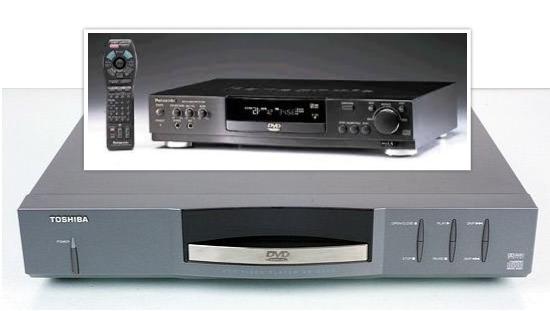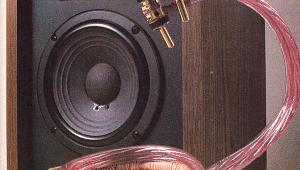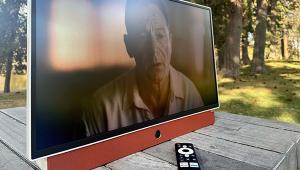Funny, today DVD quality seems so fuzzy, yet back then it seemed like a miracle to behold and be awed by. I did not early adopt as was once my practice as by that time we had young children and had to be practical but I still (to paraphrase President Carter) "lusted after them in my heart". By 2000 I decided we had lived to long without a dedicated home theater and my understanding wife seeing the longing in my eyes gave me a blank check to do as I wanted. I did most of the work myself which cut costs. While I awaited my first Sony projector to come from Boston (Pretty rare in those days, hard to get, a W10HT. Thing cost me over six grand in 2000 dollars!) I picked up a progressive scan Panasonic DVD player and hooked it up to an old Sharp 27 inch TV. First disc, Saving Private Ryan. I was in awe! Then when my projector and its 10 foot screen showed the same, I thought I had died and went to Heaven. I eventually updated to full 1080P (think the first one was 756P or something like that, Sony had an odd standard, it was not 720P) and Bluray, but that first Panasonic was sooo special. Good times. I have yet to buy a 4K player, not sure at my age I could see a difference. Maybe on my big screen, but the thought of replacing all my Blurays leaves a bitter taste in my mouth. So many movies I have updated. Beta, then VHS, laserdisc, DVD, Bluray.4K? What then 8K? I am holding out for virtual reality like in the movie Brainstorm. (another movie that I own three separate playback mediums of). I do have several 4K TVs upstairs, because they are so cheap and they are the present standard, but my theater room is still a 1080P hold out, might just keep it that way for a while.
Flashback 1997: DVD Players Go On Sale

Panasonic introduced the DVD-A300 (top in photo) and Toshiba offered two players — the SD-3006 and the SD-2006 (bottom in photo), which followed the launch of the SD-3000 player in Japan five months earlier. The players sold for $750, $699, and $599, respectively, which were considered reasonable prices for new technology — especially the Toshiba’s SD-2006.
The players could be set for 16:9 or 4:3, as the squarish 4:3 was the dominant TV aspect ratio at the time and would remain so until HDTV — which made its debut in 1998 — gained a foothold some years later. The SD-3006, Toshiba’s step-up to the SD-2006, added a component-video output and an additional analog audio output.
Warner Home Video announced the first slate of movies on DVD with 32 titles ranging in price from $19.99 to $24.99. The rollout was initially limited to seven cities withTwister being among the first batch of DVD movies to be released in the U.S.
Almost 19,000 discs were purchased in the first two weeks and by December 1997 more than 1 million DVDs had shipped, representing about 530 titles. Uptake of the new format was swift: By the end of 1999, more than 100 million discs had been shipped, representing some 5,000 titles.
In the May 1998 issue of Sound & Vision’s predecessor Stereo Review, Ken Pohlmann reviewed one of Pioneer’s first DVD players, the $635 DV-505, an entry-level follow-up to the flagship DV-S9 the company introduced in Japan in 1997. With great enthusiasm, he concluded: “The march of technology is truly impressive. For the price of a decent CD player a few years ago, you can now buy a DVD player that plays CDs with equal or superior fidelity as well as 96-kHz music DVDs and DVD movies. Although the DV-505 is an entry-level player and lacks such niceties as comprehensive backward-playback modes and a refined GUI, it is still a tempting piece of hardware. If you’re waiting to take the DVD plunge, the DV-5-5 may push you over the edge.”
The Audio Engineering Society (AES) offers an excellent summary of key events leading up the launch of DVD, excerpted here:
1993 – The first versions of the Digital Video Disc (DVD) were developed by two competing consortiums. Toshiba/Warner developed the Super Density Disc and Sony/Philips developed the Multimedia Compact Disc. "In the early 1990s, different companies began working on a further development of CD technology a disc of similar size but much greater capacity. The two forefathers to DVD were SD (Super density) disc from a consortium lead by Toshiba and Time Warner and MMCD (Multimedia CD) from a consortium lead by Sony and Philips. In developing a new standard, it was extremely important to satisfy the needs of both the computer and the movie industries. Both industries wanted a small disc solution that guaranteed CD compatibility. In September 1995, all companies involved agreed to the common set of standards. The DVD consortium could thus avoid a replay of the VHS and Betamax battle that split the analog video world in the early 1980s. The results: DVD is one standard for all fields of application." (Toshiba)1994 – Nimbus Technology & Engineering (NTE) with Time Warner and Toshiba began development of the DVD disc format. "In 1994 the Company's high industry profile and reputation for technological innovation helped to attract two significant commissions. The first, from Eastman Kodak Company, required a specialist mastering system both for their research into CD-R (recordable CDs) and to support their production requirements for an explosive growth in demand. The second commission was from Time Warner, who, together with Toshiba Corporation, were developing a new high density format able to contain full length movies. This format is now known as DVD. NTE installed the very first production proven DVD mastering system in Time Warner's U.S. manufacturing plant in January 1995. We are now the leading supplier of DVD mastering equipment, with over 3 years more experience in this field than any of our competitors. The vast majority of discs now available were mastered using Nimbus equipment." (Nimbus)
1995 - By September, all companies in the DVD consortium agreed to DVD standards. Warner Advanced Media Operations (WAMO) and WEA Manufacturing, Warner's replicating division in Olyphant, Pennsylvania produced 650,000 commercial DVD discs. "The development of the DVD manufacturing system spanned three years and three continents. Gregg Johnson, Plant Manager for Preproduction said, 'We found ourselves in a very challenging position, we were assigned the task of launching DVD and virtually every aspect of the DVD manufacturing process needed to be designed…there was no off-the-shelf DVD equipment available in 1996." (Warner Advanced Media Operations)
1996 – In November, the first DVD players went on sale in Japan.
1997 – In March, the first DVD players went on sale in the U.S., with 349,482 players sold by the end of the year.
Also see the DVD historical timeline at hometheaterforum.com.
Related:
Sound & Vision’s 1999 review of Pioneer's $2,000 Elite DV-09 DVD player
- Log in or register to post comments


Good ole Ken Pohlmann who championed of Sharp/Circuit City's[and some sleazy lawyers] ill fated self "destructing" disc version of this great format. You thought that was forgotten huh Ken? Not a chance!
I also remember SW coverage of the format and that first issue with the Toshiba player. My first player was a Pioneer LD/DVD combo player got from BB for a cool $1k Man glorious times!!!

Yes, I remember that!! Idiots wanted people to get one or two plays off them then they were useless unless you paid more to rent them again! Besides that, they were all pan and scan, no wide screen! (of course at the time, my wife thought wide screen was stupid) I recall, Spielberg was part of this. I guess by the late 90s he was hurting for money and his kids went to school shoe less, so who could blame him? Hollywood greed is one of the constants of the universe, like gravity. What they have never, nor will ever grasp, is give consumers a great deal, sell a ton, and make it up on volume. Ask Netflix, they have it figured out, at least they did.























































